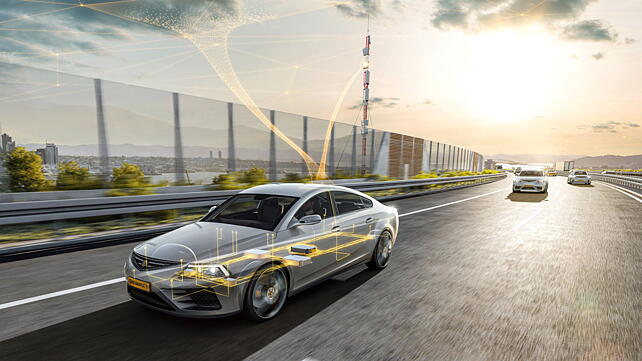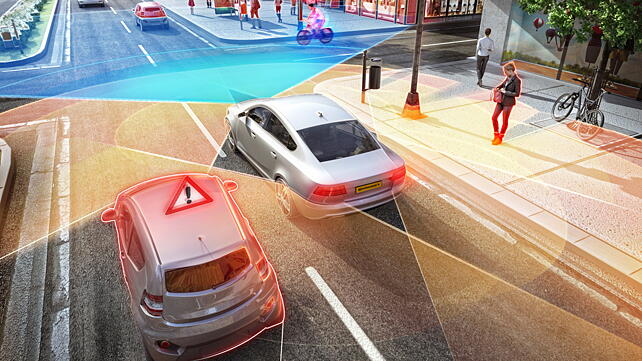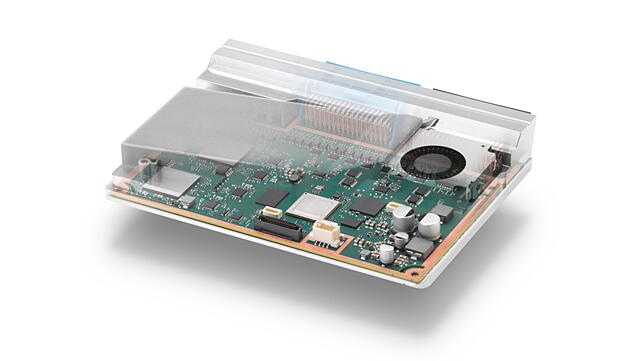
With software becoming a driver of innovation in modern vehicle solutions, leading technology company, Continental AG is demonstrating a wide variety of solutions at the on-going 19th Shanghai International Automobile Industry Exhibition, also called Auto Shanghai.
One of the primary introductions, include the world premiere of the sixth-generation radar sensors for Euro NCAP requirements for automated driving functions. The company has been driving the integration of software functions in vehicle components, including high-tech radar sensors, high-performance computers as central control units in the vehicle and data communication through to the cloud as part of telematics systems.
Less than a week back, Continental announced its collaboration with Amazon Web Services (AWS) within the scope of a new development cooperation. The goal of the long-term collaboration with AWS serving as the preferred cloud provider is to develop Continental Automotive Edge (CAEdge) – a modular hardware and software platform that connects the vehicle to the cloud and features a virtual workbench offering numerous options to develop, supply and maintain software-intensive system functions.
This, a company release stated, will allow drivers to integrate the functions they want going forward during the entire service life of their vehicle by downloading quick and convenient software updates.
Safer Driving
The new radar sensor solutions enable anticipatory applications for Euro NCAP requirements through to higher automated driving functions such as automated lane changes. The sixth generation sensors, which will go into production in 2023, include an improved detection range and a higher resolution for accurate detection of the vehicle’s surroundings.

The new-gen radar sensors are more compact in design, have higher scanning rates and offers 360-degree vehicle surrounding monitoring with ranges of around 200-250 metre depending on the radar sensor. These sensors detect objects such as crossing vehicles, motorcycles and cyclists early and accurately, claimed the company.
The company said radar sensors are just one example of dynamic growth in the field of advanced driver assistance and automated driving systems as part of state-of-the-art mobility solutions. Until now, Continental has produced over 100 million radar sensors for short and long-range applications since it started producing them two decades back.
High-Performance Computer
More than 90% of automotive innovations today can be ascribed to software developments. The amount of data generated by vehicles – with over 100 ECUs in some of them – requires management by high-performance computer (HPC). In addition, there is specific software that handles communication within the vehicle units and with the cloud.

In fact, Continental was the first automotive supplier to develop a compact HPC used in the Volkswagen ID.3 and ID.4 electric vehicles. The HPC enables a high degree of vehicle connectivity and combines data communication between different vehicle domains.
End-To-End Network Solution
At the Shanghai show, Continental has presented its end-to-end network solution for connected cars for the first time. From the sensor, the high-performance computer and the connectivity unit to the cloud, this solution implements a reliable function integration, said the company.
The fast and low-latency connection of the vehicle network to the outside world, in particular, enables real-time processing of all data that enters the vehicle and is processed by high-performance processing units in the vehicle. Software functions are distributed between the cloud, the high-performance computer and zone controllers. Together, the solution offers maximum flexibility and functional safety at the same time.
Moreover, ADAS functions can be integrated into the system to a limited extent. The system also allows flexible options for system integration for OEMs and Tier 1 suppliers – from stand-alone network access devices to complete integration in telematics control units or intelligent antenna modules.